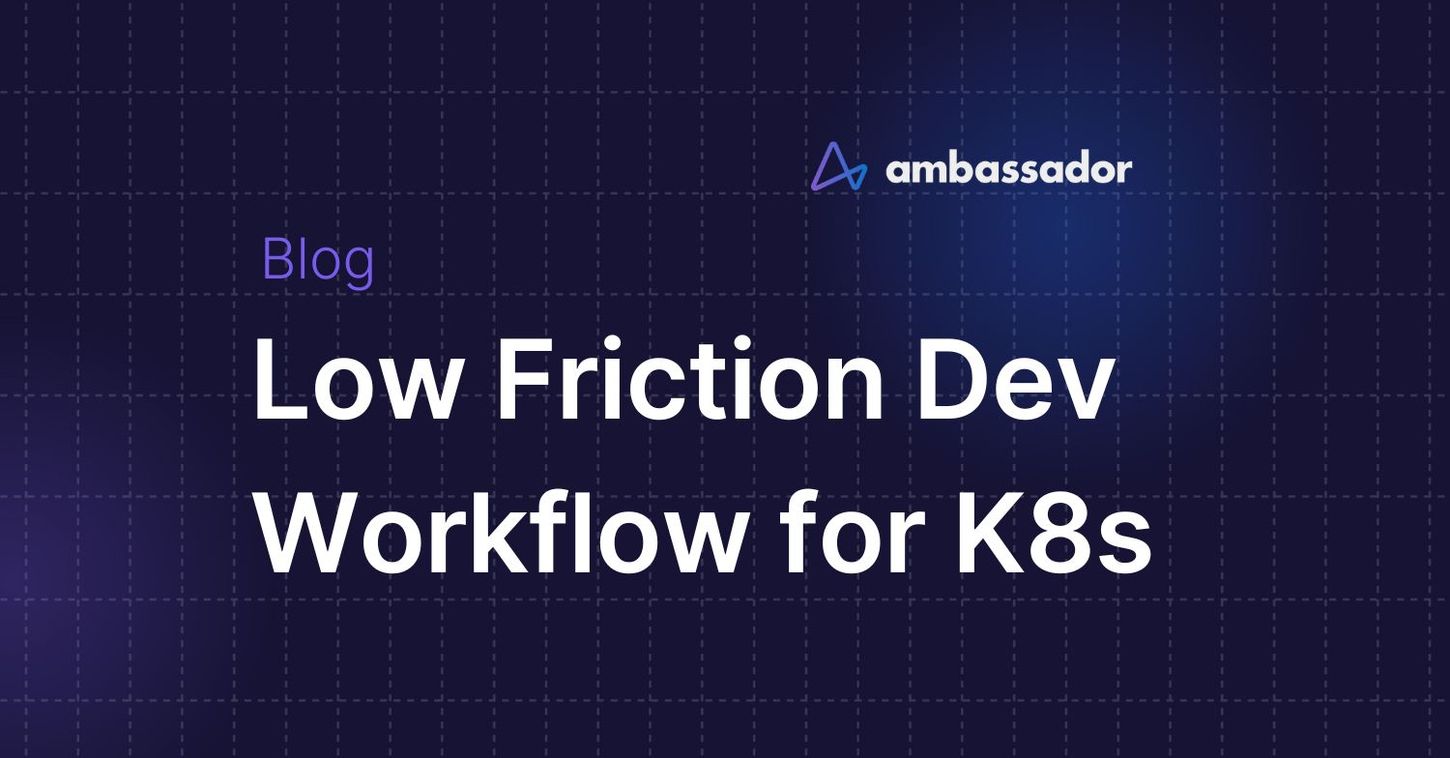A Low Friction Development Workflow for Kubernetes Services

Your cloud infrastructure
1. A development environment for Kubernetes services
2. Deploy service to Kubernetes
3. Live coding
A basic development workflow for Kubernetes services lets a developer write some code, commit it, and get it running on Kubernetes. It's also important that your development environment be as similar as possible to production, since having two different environments will inevitably introduce bugs. In this tutorial, we'll walk through a basic development workflow that is built around Kubernetes, Docker, and Envoy/Ambassador.
Your cloud infrastructure
This tutorial relies on two components in the cloud, Kubernetes and Ambassador. If you haven't already, go ahead and set them up.
- Kubernetes
- Edge Stack, a self-service API Gateway for Kubernetes
1. A development environment for Kubernetes services
You need a development environment for Kubernetes services. We recommend the following approach:
- A containerized build/runtime environment, where your service is always run and built. Containerizing your environment helps insure environmental parity across different development and production environments. It also simplifies the onboarding process for new developers.
- Developing your microservice locally, outside of the cluster. You want a fast code/build/test cycle. If you develop remotely, the additional step of deploying to a Kubernetes cluster introduces significant latency.
- Deploying your service into Kubernetes once you need to share your service with others (e.g., canary testing, internal development, etc.).
You'll need the following tools installed on your laptop:
- git, for source control
- Docker, to build and run your containers
- , to manage your deployment
kubectl - Telepresence, for locally developing your service
Go ahead and install them now, if you haven't already.
2. Deploy service to Kubernetes
In a traditional application, the release / operations team manages the deployment of application updates to production. In a microservices architecture, the team is responsible for deploying service updates to production.
We're going to deploy and publish a microservice, from source, into Kubernetes.
1. We've created a simple Python microservice that you can use as a template for your service. This template includes:
- a that specifies how your development environment and runtime environment are configured and built.
Dockerfile - a file that customizes deployments for different scenarios (e.g., production, canary, development).
service.yaml - a Kubernetes manifest () that defines how the service is run in Kubernetes. It also contains the annotations necessary to configure Ambassador for the given service.
k8s/deployment.yaml
git clone https://github.com/datawire/hello-world-python2. We're going to use Forge to automate and template-ize the deployment process. Run the Forge configuration process:
forge setup3. The process of getting a service running on a Kubernetes cluster involves a number of steps: building a Docker image, pushing the image to a repository, instantiating a Kubernetes manifest to point to the image, and applying the manifest to the cluster. We're going to tell Forge to use the
stablecd hello-world-pythonforge --profile stable deploy
4. Now, we're going to test the service. Get the external IP address of Ambassador:
kubectl get services ambassadorNAME CLUSTER-IP EXTERNAL-IP PORT(S) AGEambassador 10.11.250.208 35.190.189.139 80:31622/TCP 4d
5. Access the service via Ambassador:
curl 35.190.189.139/hello/Hello World (Python)! (up 0:03:13)
3. Live coding
When developing, you want a fast feedback cycle. You'd like to make a code change, and immediately be able to build and test your code. The deployment process we just went through adds latency into the process, since building and deploying a container with your latest changes takes time. Yet, running a service in Kubernetes lets that service access other cloud resources (e.g., other services, databases, etc.).
Telepresence lets you develop your service locally, while creating a bi-directional proxy to a remote Kubernetes cluster.
1. You'd like for your development environment to be identical to your runtime environment. We're going to do that by using the exact same Dockerfile we use for production to build a development image. Make sure you're in the
hello-world-pythondocker build . -t hello-world-dev2. Now, we can swap the existing
hello-worldtelepresence --swap-deployment hello-world-stable --docker-run \ --rm -it -v $(pwd):/service hello-world-dev:latest(Note that Forge has automatically appended a
stablestableservice.yaml3. Telepresence invokes
docker runapp.pydef root(): return "Hello World via Telepresence! (up %s)\n" % elapsed()4. Now, if we test our service via Ambassador, we'll see that we're now routing to the modified version of our service.
curl 35.190.189.139/hello/ Hello World via Telepresence! (up 0:04:13)Next Steps
- Need some expert help? Speak with an expert to see how we might be able to help improve your current development workflow.
- Check out Telepresence and Edge Stack Kubernetes-Native API Gateway for more info on each of our open source tools.